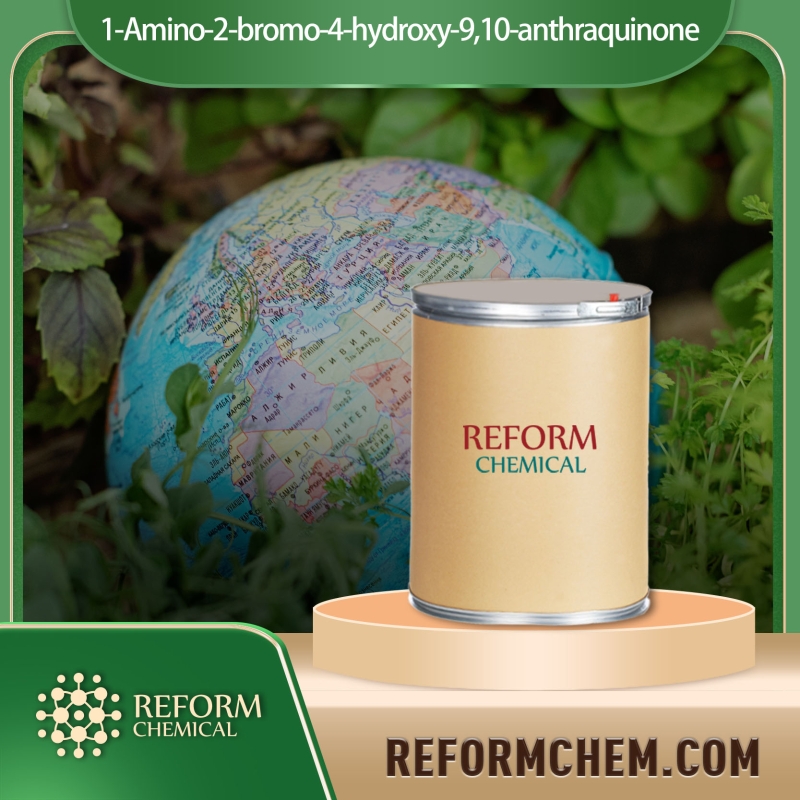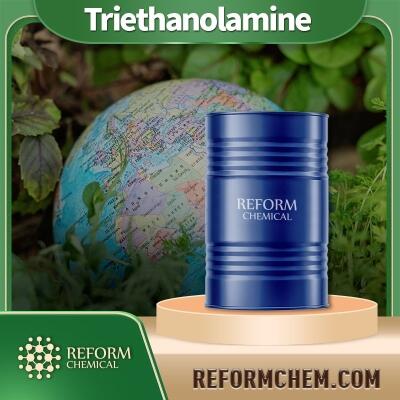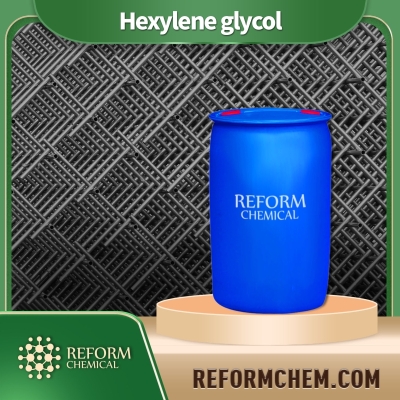Chemical Reagents
Get Chemical Reagents Raw Materials by RegionChemical Reagents
- • Deuterated Reagents (124)
- • Organic Reagents (9948)
- • Silane Reagent (852)
- • Chiral Chemicals (23)
- • Grignard Reagent (5)
- • Desulfurizer (20)
Related News
-
What Reagent Is Used To Test For Starch
2022-03-03 -
Meditex Bangladesh2019
2018-11-09 -
International Exhibition for Laboratory Equipment and Chemical Reagents
2017-06-20
Related Products Price
Chemical Reagent Suppliers
4-broMo-3-Methoxypyridine hydrochloride
CAS No: 1209335-53-4
Formula: C6H7BrClNO
Categories: Chemical Reagents > Organic Reagents
-
1209335-53-4 4-bromo-3-methoxypyridine;hydrochloride
Inquiry -
![4-broMo-3-Methoxypyridine hydrochloride buy 4-broMo-3-Methoxypyridine hydrochloride]()
4-broMo-3-Methoxypyridine hydrochloride
Inquiry -
![4-BROMO-3-METHOXYPYRIDINE HYDROCHLORIDE buy 4-BROMO-3-METHOXYPYRIDINE HYDROCHLORIDE]()
4-BROMO-3-METHOXYPYRIDINE HYDROCHLORIDE
Inquiry -
![4-broMo-3-Methoxypyridine hydrochloride buy 4-broMo-3-Methoxypyridine hydrochloride]()
4-broMo-3-Methoxypyridine hydrochloride
Inquiry
2-(chloroMethyl)pyrazine hydrochloride
CAS No: 210037-98-2
Formula: C5H6Cl2N2
Categories: Chemical Reagents > Organic Reagents
-
210037-98-2 2-(chloromethyl)pyrazine;hydrochloride
Inquiry -
![2-(chloroMethyl)pyrazine hydrochloride CAS NO 210037-98-2 buy 2-(chloroMethyl)pyrazine hydrochloride CAS NO 210037-98-2]()
2-(chloroMethyl)pyrazine hydrochloride CAS NO 210037-98-2
$11.11/KG EXW
Inquiry -
![2-(CHLOROMETHYL)PYRAZINE HYDROCHLORIDE buy 2-(CHLOROMETHYL)PYRAZINE HYDROCHLORIDE]()
2-(CHLOROMETHYL)PYRAZINE HYDROCHLORIDE
Inquiry -
![2-(chloroMethyl)pyrazine hydrochloride buy 2-(chloroMethyl)pyrazine hydrochloride]()
2-(chloroMethyl)pyrazine hydrochloride
Inquiry
7-Azabicyclo[2,2,1]heptane hydrochloride
CAS No: 27514-07-4
Formula: C6H12ClN
Categories: Chemical Reagents > Organic Reagents
-
7-Azabicyclo[2,2,1]heptane hydrochloride
Inquiry -
27514-07-4 7-azabicyclo[2.2.1]heptane;hydrochloride
Inquiry -
![7-Azabicyclo[2.2.1]heptane hydrochloride buy 7-Azabicyclo[2.2.1]heptane hydrochloride]()
7-Azabicyclo[2.2.1]heptane hydrochloride
Inquiry -
![7-Azabicyclo[2,2,1]heptane hydrochloride CAS NO 27514-07-4 buy 7-Azabicyclo[2,2,1]heptane hydrochloride CAS NO 27514-07-4]()
7-Azabicyclo[2,2,1]heptane hydrochloride CAS NO 27514-07-4
$11.11/KG EXW
Inquiry
(2-AMINO-ETHYL)-UREA HCL
CAS No: 858001-69-1
Formula: C3H10ClN3O
Categories: Chemical Reagents > Organic Reagents
-
858001-69-1 2-aminoethylurea;hydrochloride
Inquiry -
![(2-AMINO-ETHYL)-UREA HCL buy (2-AMINO-ETHYL)-UREA HCL]()
(2-AMINO-ETHYL)-UREA HCL
Inquiry -
![(2-AMINO-ETHYL)-UREA HCL buy (2-AMINO-ETHYL)-UREA HCL]()
(2-AMINO-ETHYL)-UREA HCL
Inquiry -
![(2-AMINO-ETHYL)-UREA HCL buy (2-AMINO-ETHYL)-UREA HCL]()
(2-AMINO-ETHYL)-UREA HCL
Inquiry
(2S,4R)-4-Fluoropyrrolidine-2-carboxylic acid hydrochloride
CAS No: 60604-36-6
Formula: C5H9ClFNO2
Categories: Chemical Reagents > Organic Reagents
-
(4R)-4-FLUORO-L-PROLINE HCL
Inquiry -
60604-36-6 (2S,4R)-4-fluoropyrrolidine-2-carboxylic acid;hydrochloride
Inquiry -
![(4R)-4-FLUORO-L-PROLINE HCL buy (4R)-4-FLUORO-L-PROLINE HCL]()
(4R)-4-FLUORO-L-PROLINE HCL
Inquiry -
![(2S,4R)-4-FLUOROPYRROLIDINE-2-CARBOXYLIC ACID HYDROCHLORIDE buy (2S,4R)-4-FLUOROPYRROLIDINE-2-CARBOXYLIC ACID HYDROCHLORIDE]()
(2S,4R)-4-FLUOROPYRROLIDINE-2-CARBOXYLIC ACID HYDROCHLORIDE
Inquiry
(Tetrahydro-2H-pyran-4-yl)hydrazine hydrochloride
CAS No: 194543-22-1
Formula: C5H13ClN2O
Categories: Chemical Reagents > Organic Reagents
-
Tetrahydro-2H-pyran-4-ylhydrazine hydrochloride
Inquiry -
194543-22-1 oxan-4-ylhydrazine;hydrochloride
Inquiry -
![(tetrahydro-pyran-4-yl)-hydrazine hydrochloride buy (tetrahydro-pyran-4-yl)-hydrazine hydrochloride]()
(tetrahydro-pyran-4-yl)-hydrazine hydrochloride
Inquiry -
![(TETRAHYDRO-2H-PYRAN-4-YL)HYDRAZINE HYDROCHLORIDE buy (TETRAHYDRO-2H-PYRAN-4-YL)HYDRAZINE HYDROCHLORIDE]()
(TETRAHYDRO-2H-PYRAN-4-YL)HYDRAZINE HYDROCHLORIDE
Inquiry
5-Fluorothiazol-2-amine hydrochloride
CAS No: 745053-64-9
Formula: C3H4ClFN2S
Categories: Chemical Reagents > Organic Reagents
-
745053-64-9 5-fluoro-1,3-thiazol-2-amine;hydrochloride
Inquiry -
![5-FLUOROTHIAZOL-2-AMINE HYDROCHLORIDE buy 5-FLUOROTHIAZOL-2-AMINE HYDROCHLORIDE]()
5-FLUOROTHIAZOL-2-AMINE HYDROCHLORIDE
Inquiry -
![5-Fluorothiazol-2-aminehydrochloride buy 5-Fluorothiazol-2-aminehydrochloride]()
5-Fluorothiazol-2-aminehydrochloride
Inquiry -
![5-FLUOROTHIAZOL-2-AMINE HYDROCHLORIDE buy 5-FLUOROTHIAZOL-2-AMINE HYDROCHLORIDE]()
5-FLUOROTHIAZOL-2-AMINE HYDROCHLORIDE
Inquiry
2-(Aminomethyl)-5-(trifluoromethyl)pyridine hydrochloride
CAS No: 871826-12-9
Formula: C7H8ClF3N2
Categories: Chemical Reagents > Organic Reagents
-
871826-12-9 [5-(trifluoromethyl)pyridin-2-yl]methanamine;hydrochloride
Inquiry -
![2-(Aminomethyl)-5-(trifluoromethyl)pyridinehydrochloride buy 2-(Aminomethyl)-5-(trifluoromethyl)pyridinehydrochloride]()
2-(Aminomethyl)-5-(trifluoromethyl)pyridinehydrochloride
Inquiry -
![2-(Aminomethyl)-5-(trifluoromethyl)pyridine hydrochloride buy 2-(Aminomethyl)-5-(trifluoromethyl)pyridine hydrochloride]()
2-(Aminomethyl)-5-(trifluoromethyl)pyridine hydrochloride
Inquiry -
![2-(Aminomethyl)-5-(trifluoromethyl)pyridine hydrochloride buy 2-(Aminomethyl)-5-(trifluoromethyl)pyridine hydrochloride]()
2-(Aminomethyl)-5-(trifluoromethyl)pyridine hydrochloride
Inquiry
2-AMINOPROPANENITRILE HYDROCHLORIDE
CAS No: 72187-91-8
Formula: C3H7ClN2
Categories: Chemical Reagents > Organic Reagents
-
2-AMINOPROPANENITRILE HYDROCHLORIDE
Inquiry -
72187-91-8 2-aminopropanenitrile;hydrochloride
Inquiry -
![2-AMINOPROPANENITRILE HYDROCHLORIDE buy 2-AMINOPROPANENITRILE HYDROCHLORIDE]()
2-AMINOPROPANENITRILE HYDROCHLORIDE
Inquiry -
![Propanenitrile, 2-amino-, monohydrochloride(9CI) buy Propanenitrile, 2-amino-, monohydrochloride(9CI)]()
Propanenitrile, 2-amino-, monohydrochloride(9CI)
Inquiry
2-BENZOTRIAZOL-1-YL-ETHYLAMINEHCL
CAS No: 2690-84-8
Formula: C8H11ClN4
Categories: Chemical Reagents > Organic Reagents
-
2690-84-8 2-(benzotriazol-1-yl)ethanamine;hydrochloride
Inquiry -
![2-BENZOTRIAZOL-1-YL-ETHYLAMINE HCL CAS NO 2690-84-8 buy 2-BENZOTRIAZOL-1-YL-ETHYLAMINE HCL CAS NO 2690-84-8]()
2-BENZOTRIAZOL-1-YL-ETHYLAMINE HCL CAS NO 2690-84-8
$11.11/KG EXW
Inquiry -
![2-BENZOTRIAZOL-1-YL-ETHYLAMINE HCL buy 2-BENZOTRIAZOL-1-YL-ETHYLAMINE HCL]()
2-BENZOTRIAZOL-1-YL-ETHYLAMINE HCL
Inquiry -
![2-BENZOTRIAZOL-1-YL-ETHYLAMINE HCL buy 2-BENZOTRIAZOL-1-YL-ETHYLAMINE HCL]()
2-BENZOTRIAZOL-1-YL-ETHYLAMINE HCL
Inquiry
374 Chemical Reagents Suppliers
Short on time? Let Chemical Reagents sellers contact you.
3,3-DIMETHYLAZETIDINE HYDROCHLORIDE
CAS No: 89381-03-3
Formula: C5H12ClN
Categories: Chemical Reagents > Organic Reagents
-
89381-03-3 3,3-dimethylazetidine;hydrochloride
Inquiry -
![3,3-DIMETHYLAZETIDINEHYDROCHLORIDE buy 3,3-DIMETHYLAZETIDINEHYDROCHLORIDE]()
3,3-DIMETHYLAZETIDINEHYDROCHLORIDE
Inquiry -
![3,3-DIMETHYLAZETIDINE HYDROCHLORIDE buy 3,3-DIMETHYLAZETIDINE HYDROCHLORIDE]()
3,3-DIMETHYLAZETIDINE HYDROCHLORIDE
Inquiry -
![3,3-DIMETHYLAZETIDINE HYDROCHLORIDE buy 3,3-DIMETHYLAZETIDINE HYDROCHLORIDE]()
3,3-DIMETHYLAZETIDINE HYDROCHLORIDE
Inquiry
6,7-Dihydro-5H-pyrrolo[1,2-a]imidazole-6-carboxylic acid hydrochloride
CAS No: 1965310-16-0
Formula: C7H9ClN2O2
Categories: Chemical Reagents > Organic Reagents
-
1965310-16-0 6,7-dihydro-5H-pyrrolo[1,2-a]imidazole-6-carboxylic acid;hydrochloride
Inquiry -
![6,7-Dihydro-5H-pyrrolo[1,2-a]imidazole-6-carboxylic acid hydrochloride buy 6,7-Dihydro-5H-pyrrolo[1,2-a]imidazole-6-carboxylic acid hydrochloride]()
6,7-Dihydro-5H-pyrrolo[1,2-a]imidazole-6-carboxylic acid hydrochloride
Inquiry -
![6,7-Dihydro-5H-pyrrolo[1,2-a]imidazole-6-carboxylic acid hydrochloride buy 6,7-Dihydro-5H-pyrrolo[1,2-a]imidazole-6-carboxylic acid hydrochloride]()
6,7-Dihydro-5H-pyrrolo[1,2-a]imidazole-6-carboxylic acid hydrochloride
Inquiry -
![6,7-Dihydro-5H-pyrrolo[1,2-a]imidazole-6-carboxylic acid hydrochloride buy 6,7-Dihydro-5H-pyrrolo[1,2-a]imidazole-6-carboxylic acid hydrochloride]()
6,7-Dihydro-5H-pyrrolo[1,2-a]imidazole-6-carboxylic acid hydrochloride
Inquiry
4-AMINOMETHYL-BENZAMIDEHYDROCHLORIDE
CAS No: 20188-40-3
Formula: C8H11ClN2O
Categories: Chemical Reagents > Organic Reagents
-
20188-40-3 4-(aminomethyl)benzamide;hydrochloride
Inquiry -
![4-AMINOMETHYL-BENZAMIDE HYDROCHLORIDE buy 4-AMINOMETHYL-BENZAMIDE HYDROCHLORIDE]()
4-AMINOMETHYL-BENZAMIDE HYDROCHLORIDE
Inquiry -
![4-AMINOMETHYL-BENZAMIDE HYDROCHLORIDE buy 4-AMINOMETHYL-BENZAMIDE HYDROCHLORIDE]()
4-AMINOMETHYL-BENZAMIDE HYDROCHLORIDE
Inquiry -
![4-AMINOMETHYL-BENZAMIDE HYDROCHLORIDE buy 4-AMINOMETHYL-BENZAMIDE HYDROCHLORIDE]()
4-AMINOMETHYL-BENZAMIDE HYDROCHLORIDE
Inquiry
4-ethylsulfonyl-N,N-dimethyl-4,4-diphenylbutan-2-amine;hydrochloride
CAS No: 60662-79-5
Formula: C20H28ClNO2S
Categories: Chemical Reagents > Organic Reagents
Potassium pivalate
CAS No: 19455-23-3
Formula: C5H9KO2
Categories: Chemical Reagents > Organic Reagents
-
PotassiuM triMethylacetate
Inquiry -
PotassiuM triMethylacetate, 95% 99% high purity certified Professional producer Greenbo
Inquiry -
![PotassiuM triMethylacetate, 95% buy PotassiuM triMethylacetate, 95%]()
PotassiuM triMethylacetate, 95%
Inquiry -
![Potassium triMethylacetate buy Potassium triMethylacetate]()
Potassium triMethylacetate
Inquiry
Potassium 2-(quinolin-4-yl)acetate
CAS No: 2007920-48-9
Formula: C11H8KNO2
Categories: Chemical Reagents > Organic Reagents
SODIUM HYDROSULFIDE HYDRATE
CAS No: 207683-19-0
Formula: H3NaOS
Categories: Chemical Reagents > Organic Reagents
Sodium 4-nitrobenzene-1-sulfinate
CAS No: 15959-31-6
Formula: C6H4NNaO4S
Categories: Chemical Reagents > Organic Reagents
-
15959-31-6 sodium;4-nitrobenzenesulfinate
Inquiry -
![sodium 4-nitrobenzene-1-sulfinate buy sodium 4-nitrobenzene-1-sulfinate]()
sodium 4-nitrobenzene-1-sulfinate
Inquiry
Carbon
CAS No: 7440-44-0
Formula: C
Categories: Chemical Reagents > Cosmetic Colorant
-
Activated charcoal 8x18
Inquiry -
MTC OIL 99% Light Yellow CH4 Senwayer
Inquiry -
Carbon
Inquiry -
Carbon 7440-44-0
Inquiry
(S)-N-Methyl-1-(1-methylpyrrolidin-2-yl)methanamine dihydrochloride
CAS No: 2370018-89-4
Formula: C7H18Cl2N2
Categories: Chemical Reagents > Organic Reagents
New Arrivals
Most Popular
-
2-Nitrobenzaldehyde 552-89-6 Organic Synthesis o-nitro-benzaldehyd High Quality 99% Industrial Grade
$1-1.3/KG FOB
-
Triethanolamine CAS NO 102-71-6 Chemical Reagents Intermediates 99% High Quality
$1-1.3/KG FOB
-
Oxalic acid CAS NO. 144-62-7 99% High Quality powder Chemical intermediates
$8-8.7/KG FOB
-
2-Methyl-2,4-pentanediol CAS NO. 107-41-5 Chemical Reagent 99% High Quality organic chemical
$1-1.3/KG FOB
People are searching
Frequently Asked Questions
Chemical Reagents can be divided into different categories. On ECHEMI, we divided them into Deuterated Reagents, Organic Reagents, Silane Reagent, Chiral Chemicals, Grignard Reagent, and Desulfurizer. A common Deuterated Reagent is Lithium tetradeuteroaluminate, which is commonly used as a source of deuterium atoms to produce tritium for cooling nuclear reactors.. A common Organic Reagent is Benzyldodecyldimethylammonium chloride, which is used as acrylic fiber leveling agent, dye retardant for printing and dyeing fabric, oil field oil well fungicide, cooling water system sterilization and algaecide, medical device disinfectant, etc. A common Silane Reagent is Methyltris(methyl ethyl ketoxime)silane, which is used as a neutral curing agent in silicone sealant formulations. A common chiral chemical is L-Dibenzoyltartaric acid, an organic chiral compound that can be used as an organic intermediate and pharmaceutical intermediate. A common Grignard reagent is Benzylmagnesium bromide, which can be used in the preparation of 2,6-dimethyl-2-heptanol. A common Desulfurizer is TETRABUTYLAMMONIUM FLUORIDE, a reagent for the preparation of terminal olefins from primary alkyl iodides. More other common chemical reagents are available on ECHEMI, just feel free to inform us what you need and get competitive quotes!
A chemical reagent is a substance or compound to achieve or test a chemical change in chemical reactions. Reagents can be organic or inorganic compounds, and are selected based on their properties and ability to facilitate specific reactions. Chemical reagents are widely used in various fields, like chemistry, biochemistry, and other related areas for purposes such as synthesizing, analyzing, purifying, or characterizing chemical substances.
A chemical can be any specific chemical element or chemical compound with certain properties, however a reagent takes part in the chemical reactions and will convert to something else. That is to say a reagent is a chemical which is used to bring out a certain chemical reaction.












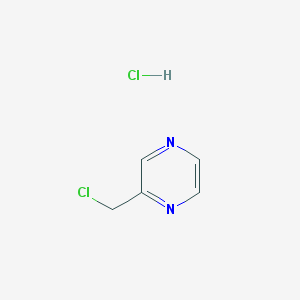

![7-Azabicyclo[2,2,1]heptane hydrochloride buy 7-Azabicyclo[2,2,1]heptane hydrochloride](https://file.echemi.com/fileManage/upload/goodpicture/20220406/20220801105657332227_27514-07-4.png)
![27514-07-4 7-azabicyclo[2.2.1]heptane;hydrochloride buy 27514-07-4 7-azabicyclo[2.2.1]heptane;hydrochloride](https://file.echemi.com/fileManage/upload/goodpicture/20240724/27514-07-4-7-azabicyclo221heptanehydrochloride_b20240724012129374.png)
![7-Azabicyclo[2.2.1]heptane hydrochloride buy 7-Azabicyclo[2.2.1]heptane hydrochloride](https://file.echemi.com/fileManage/upload/canonicalSmiles/20220811/b46cbc2cb3b549fb87a95306cfac460c.png)
![7-Azabicyclo[2,2,1]heptane hydrochloride CAS NO 27514-07-4 buy 7-Azabicyclo[2,2,1]heptane hydrochloride CAS NO 27514-07-4](https://file.echemi.com/fileManage/upload/cas/644/38ea90db-7850-4147-8d63-5ce653c898fb.png)









![871826-12-9 [5-(trifluoromethyl)pyridin-2-yl]methanamine;hydrochloride buy 871826-12-9 [5-(trifluoromethyl)pyridin-2-yl]methanamine;hydrochloride](https://file.echemi.com/fileManage/upload/goodpicture/20240724/871826-12-9-5-trifluoromethylpyridin-2-ylmethanaminehydrochloride_b20240724093717037.png)




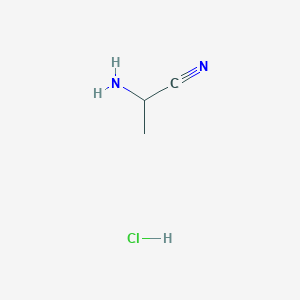








![1965310-16-0 6,7-dihydro-5H-pyrrolo[1,2-a]imidazole-6-carboxylic acid;hydrochloride buy 1965310-16-0 6,7-dihydro-5H-pyrrolo[1,2-a]imidazole-6-carboxylic acid;hydrochloride](https://file.echemi.com/fileManage/upload/goodpicture/20240724/1965310-16-0-6-7-dihydro-5h-pyrrolo1-2-aimidazole-6-carboxylic-acidhydrochloride_b20240724234122413.png)



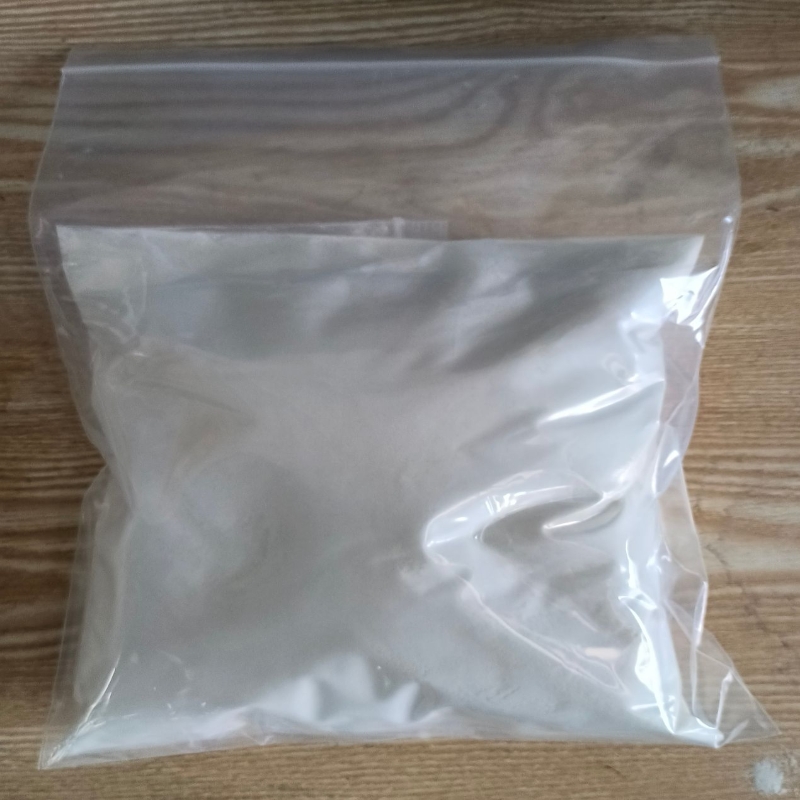










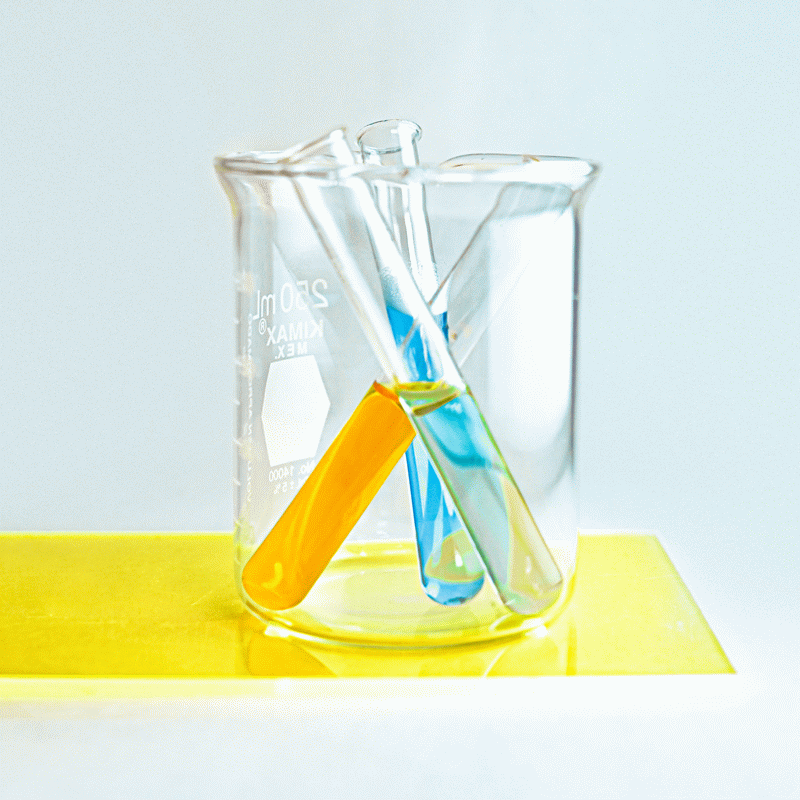
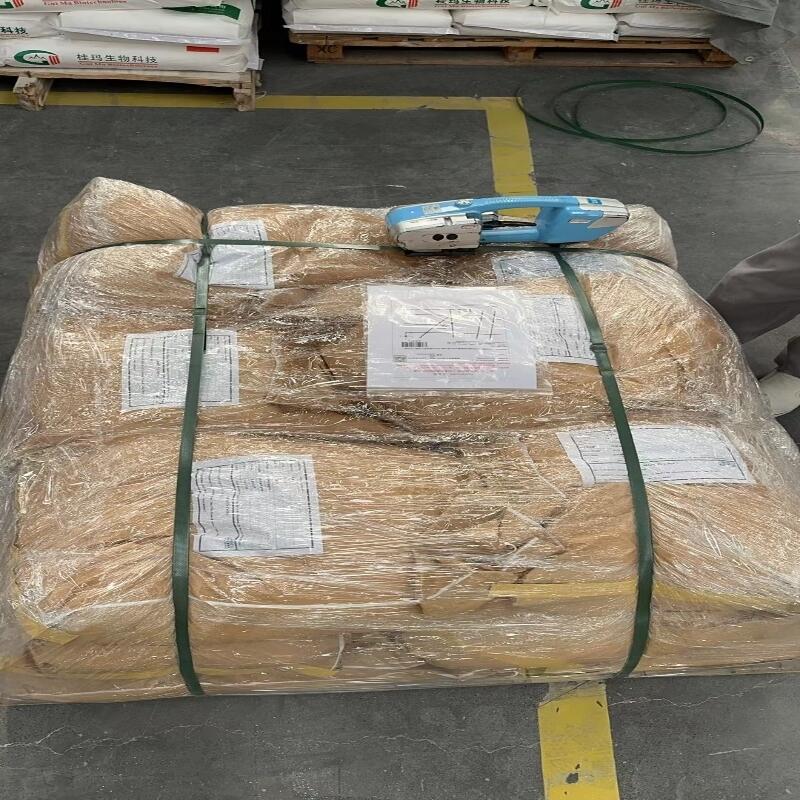



![2370018-89-4 N-methyl-1-[(2S)-1-methylpyrrolidin-2-yl]methanamine;dihydrochloride buy 2370018-89-4 N-methyl-1-[(2S)-1-methylpyrrolidin-2-yl]methanamine;dihydrochloride](https://file.echemi.com/fileManage/upload/goodpicture/20240724/2370018-89-4-n-methyl-1-2s-1-methylpyrrolidin-2-ylmethanaminedihydrochloride_b20240724131435723.png)
